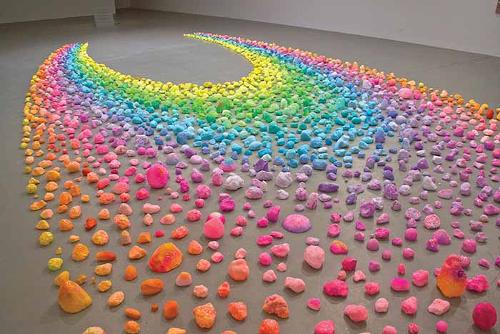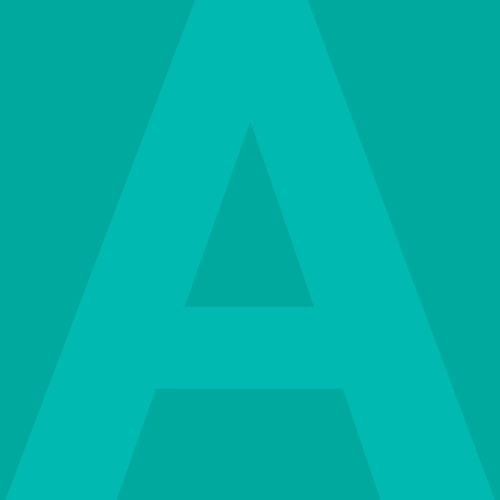.jpg)
In the 1973 French film Themroc, a blue-collar worker rebels against his 9-to-5 job and the attendant conventions imposed on him by modern society by deliberately regressing into a type of 'caveman' existence. His rejection of society and its strictures occurs incrementally: first he rejects his job, then he rejects his homogenous apartment (bashing holes through the walls, opening out onto the street below), and finally he performs the most elemental of societal taboos - incest (taking his sister for his partner) and cannibalism (roasting, in the film’s most iconic scene, a policeman on a spit then eating him). Themroc’s retreat from convention in the film is best tracked through his voice. He rejects language itself and speaks solely a form of gibberish enunciated by grunts, howls and shouts. Importantly, Themroc does not shut down communication itself rather he rejects the prefabricated selection of words and sentence structures carved out for him by his society. In this way, Themroc’s gesture, though comic, is analogous to the artist’s: he communicates non-verbally, inventing new ways to convey meaning through non-linguistic channels, feeling that his message will be flattened by the social space of language. And indeed non-verbal vocalisation has been a key subject for modern and contemporary artists – ranging from the Russian Futurists’ development of the ‘transrational’ language ‘Zaum’, to more recent experimentations with the voice and language by artists like David Chesworth in Australia.
Vocal Folds was aimed squarely at this tradition. Each of the three video works addressed the voice’s relationship to language. But more precisely, each work triangulated a different relationship between the voice, language and the body: they looked at the material and conceptual ‘foldings’ of the voice as a conduit that allows movement between the interior and exterior worlds; the physical body (the expression of the voice through the lungs, vocal cords, tongue and lips); and the conceptual realm of language (the codification of the voice into words, sentences and inflections).
Manon de Boer’s three-part film installation one, two, many asked the viewer to analyse the physical, non-linguistic properties of the voice as well as the conceptual qualities of vocalised language by juxtaposing, in the first and second parts, footage of the flautist Michael Schmid performing Istvan Matuz’s Studium (1974) for solo flute, which requires circular breathing (simultaneous inhalation and exhalation), with a spoken monologue by a woman analysing Roland Barthes’ voice (its ‘grain’ – not, importantly, the content of his speech) whilst delivering a lecture series titled ‘How We Live Together’. De Boer’s emphasis on the physical labour of the body performing rather than the music itself, and the material (or formal) analysis of Barthes’s speech rather than the nominal subject of that speech, trains the viewer to reflect on the complex interstitiality of the voice refracted through the body and through language. VALIE EXPORT’s highly reflexive I turn over the pictures of my voice in my head literalised this triangle between voice, body and language by presenting footage taken from a laryngynoscope placed inside her larynx to capture the contractions and expansions of her vocal cords as she reads her text about the nature of the voice. Both EXPORT and de Boer’s works fail to isolate the voice as a thing in itself; they only foreground the systems that facilitate and surround its projection, reception and interpretation.
The exhibition, which also included an elaborate installation of Marcus Coates’s 14-channel Dawn Chorus, was accompanied by a "listening library" and a series of performances in the gallery by artists like Christopher LG Hill and Alex Vivian, whose improvised music project GUGG comprises their voices recorded, looped and layered into rhythmic compositions, which distort any traces of recognisable language. A screening of Arf Arf’s 1993 film Thread of Voice, followed by a live sound poetry performance by the group in which they hissed, burped and chanted together (part of a program curated by OtherFilm to accompany Vocal Folds), similarly showed the voice to be a mutable artistic material that is frequently deployed against the space of language. Coupled with the exhibition and library, these events showed non-verbal vocalisation to be not only an allegory of the work of an artist, but also a popular tool and material. The achievement of the exhibition’s broad program, then, was not to define the voice and its relation to the body and language, but to further destabilise the concept of the voice by showing the multiple and polymorphous ways in which it can undermine and, like Themroc, fully reject the outwardly rational structures of language, and elude, like EXPORT, both a physical and an ontological definition.












